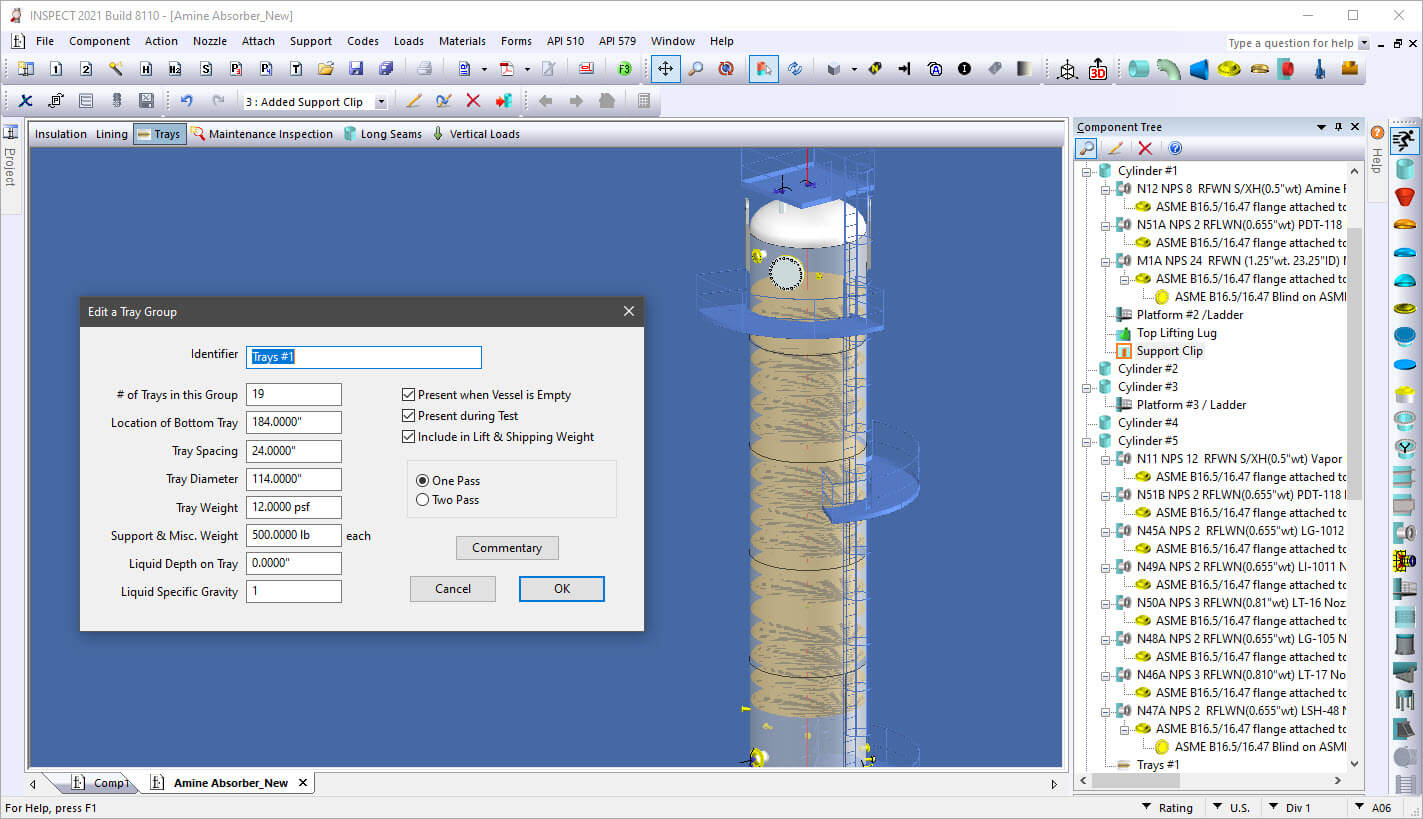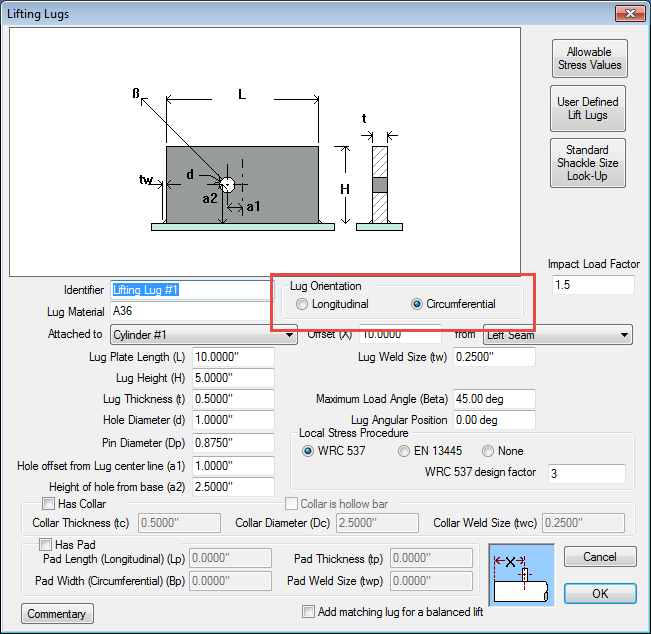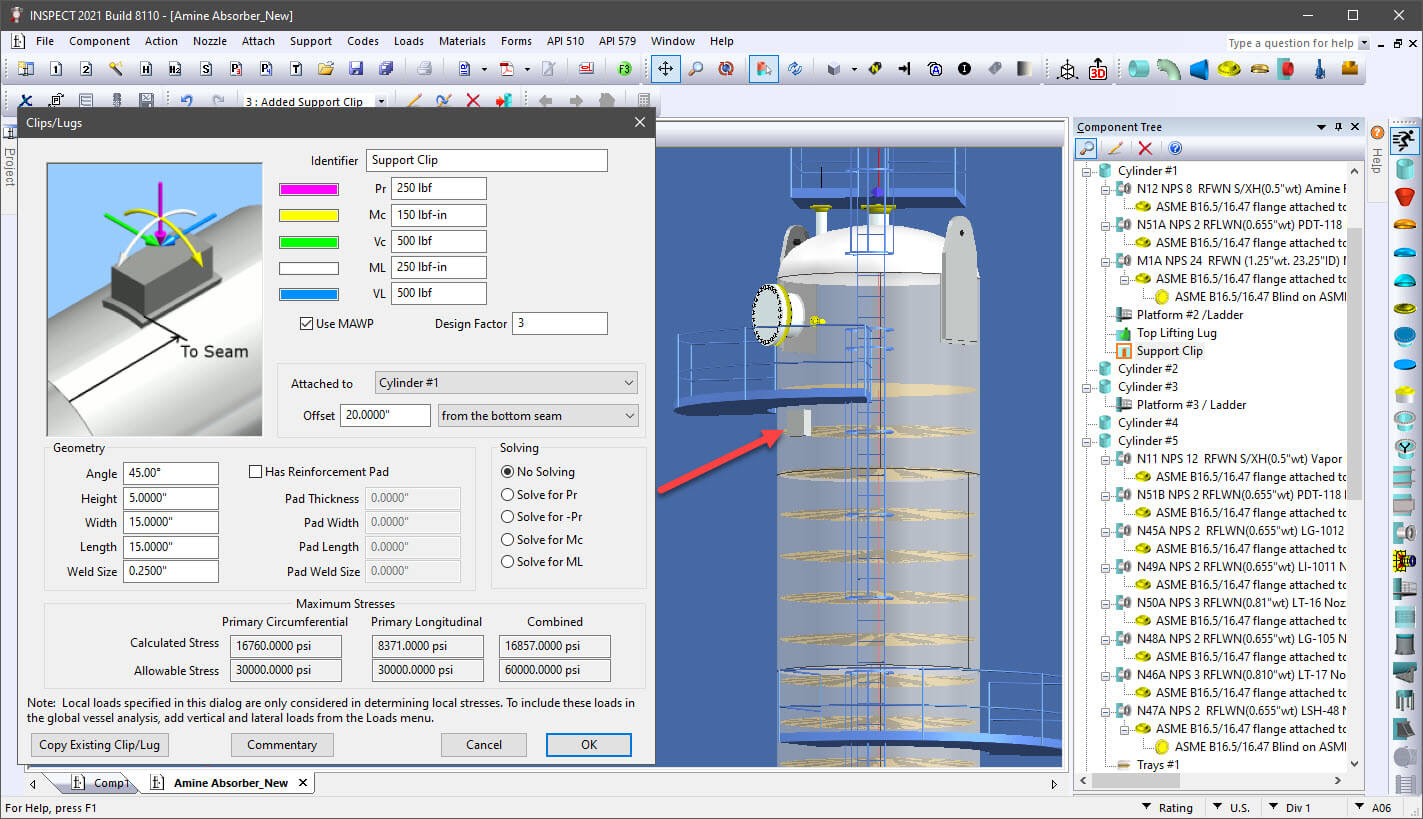Pressure Vessel Internals and Attachments
The COMPRESS Attach Menu allows designers to quickly include the mechanical effects of pressure vessel internals and attachments in their designs. It is also used to analyze common pressure vessel details such as clips, lugs and trunnions. How COMPRESS deals with individual attachments varies depending on its type and location as described below.
Platforms, Ladders, Insulation, and Piping
Adding attachments directly to a pressure vessel, including platforms, ladders, piping and insulation, adds weight, and increases the vessel’s projected area and wind loads. In these cases, COMPRESS takes the attachment’s details and calculates its contribution to the vessel’s mass distribution, horizontal shears, and overturning moments. The attachment loads are then combined with all other specified loads due to pressure, weight, wind, and seismic in the final COMPRESS design report.
Trays, Packed Beds, and Linings
Adding pressure vessel internals such as trays, beds, and linings adds weight but does not increase the vessel’s projected exterior cross sectional area. COMPRESS uses the specified internals to calculate their contribution to the vessel’s mass distribution and period of vibration. This in turns flows through the combined weight, wind, and seismic horizontal shears and overturning moment calculations as required.



